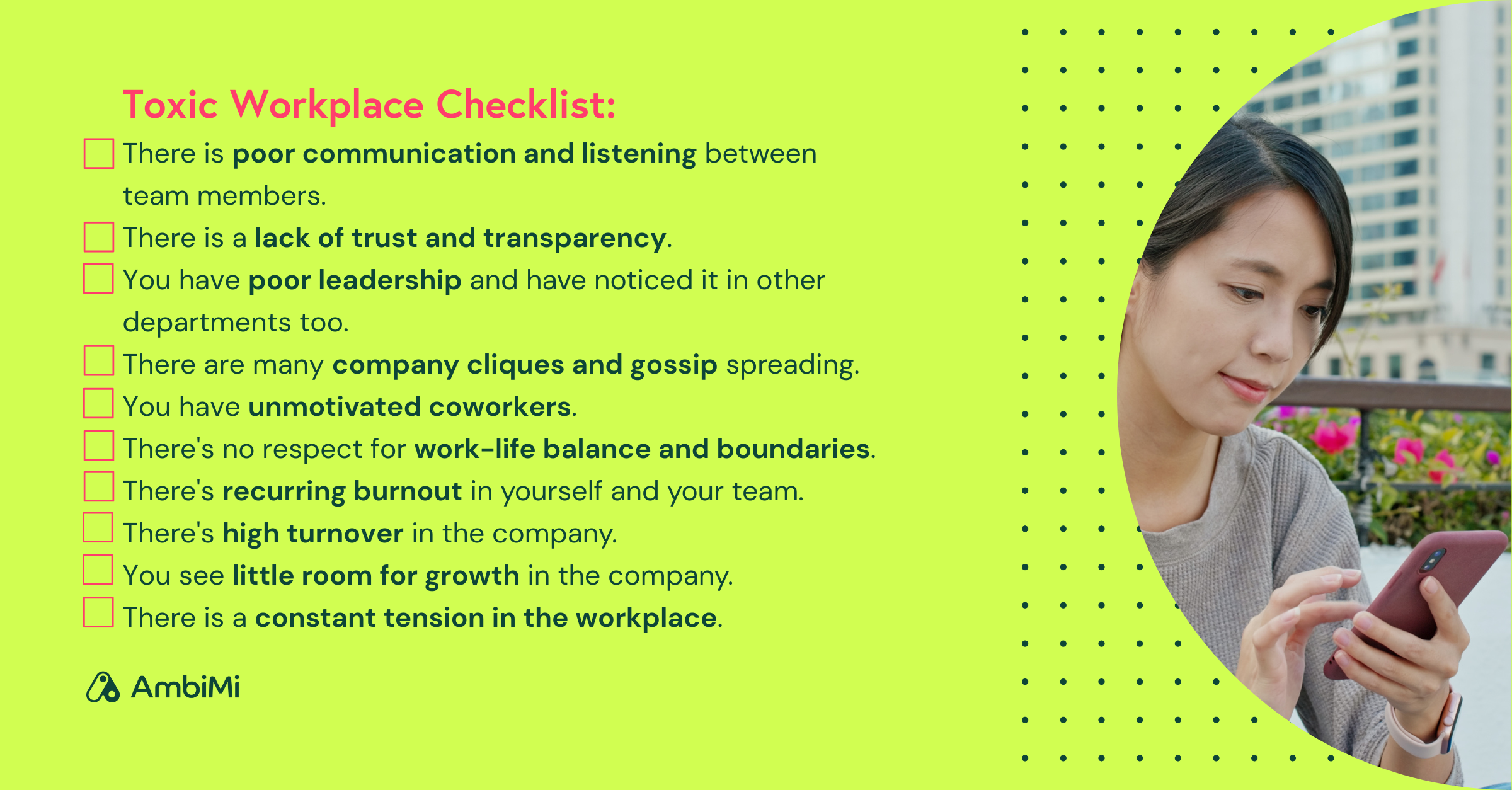If You Check Off These 10 Things, You May be in a Toxic Workplace
If you think you're in a toxic workplace, chances are you're not far off. Toxic cultures go past a bad day or two. Instead, they affect your daily life inside and outside of your job. We'll review our 10-point checklist you can use to assess your work environment.
What Is a Toxic Workplace?
A toxic workplace isn't the same as not liking your job. You may love what you're doing but not where you're doing It. A toxic workplace Is:
"Any job where the work, the atmosphere, the people, or any combination of those things cause serious disruptions in the rest of your life."
Toxic Workplace Checklist
Here are our top indicators that you're in a toxic workplace. If you experience less than four of these, you might be in a toxic environment. In this case, you can likely talk to your boss or another supervisor to fix the issue. But if you check off more than four (or dare we say all) and don't think it's fixable, we'd suggest looking for a new role.
Examples of a Toxic Workplace
Amanda has been an Office Assistant with a company for a few months. She started feeling increasingly unhappy with work and considered leaving. She used this checklist to determine if her workplace was toxic.
Poor communication and listening
Amanda remembered a recent project she's gotten, planning an office staff party. There was little instruction and clarity from her supervisor, Mike. After finishing the plan, she reviewed it with Mike, who told her it wasn't what he was looking for. When she said she didn't get enough direction, Mike told her she should have known how to plan the party herself.
Lack of Trust and Transparency
Amanda felt like management kept things from the team. She felt like she always only heard half the story and never got a full picture of company processes. In return, Amanda didn't feel she could talk to Mike about anything. Instead, she kept her head down and said everything was fine.
Poor Leadership
The previous example displayed poor leadership for Amanda. She thought of other examples too. Mike blamed her for his mistakes and never respected her time out of office. He'd always call her after 5:00 PM or on weekends. When she talked to other coworkers, they had the same issue in different departments.
Company cliques and gossip
Amanda thought back to her first day in the office. In the lunch room, many groups were sitting in silos. When she joined one group, they gossiped about other groups in the office. Amanda felt uncomfortable and tried to avoid the gossip.
Unmotivated coworkers
Amanda's coworkers tended to procrastinate to the last possible second. Plus, they never spoke up with their ideas or input. This made it difficult for Amanda to motivate herself to do her job.
Work-life balance and boundaries
Besides calling after 5:00 PM, Mike often gives Amanda three hours of tasks an hour before she's off. Then he says he needs it by tonight. She is constantly overworked. When she stays late, she noticed most departments have employees staying late too.
Recurring burnout
When Amanda first started, she noticed many people were out sick often. After a while, she realized it was because her coworkers were always burnt out.
High turnover
Amanda noticed a lot of turnover in the company but thought It might be the industry she's in. Although some industries have high turnover, she quickly recognized that it came down to a toxic culture.
Little room for growth
When Amanda thought back, she noticed her boss never discussed advancement opportunities. Few teammates were ever promoted or developed in their current roles.
Tension in the workplace
Amanda realized she and her colleagues were always tense when Mike was around. They were always on edge and didn't feel like they could relax in the office.
In this case, Amanda determined that her workplace was toxic. So, she decided it was time to move on and find a new role.
If these sound like you, you might be in a toxic situation. Remember, life's too short to stay in a toxic environment!


